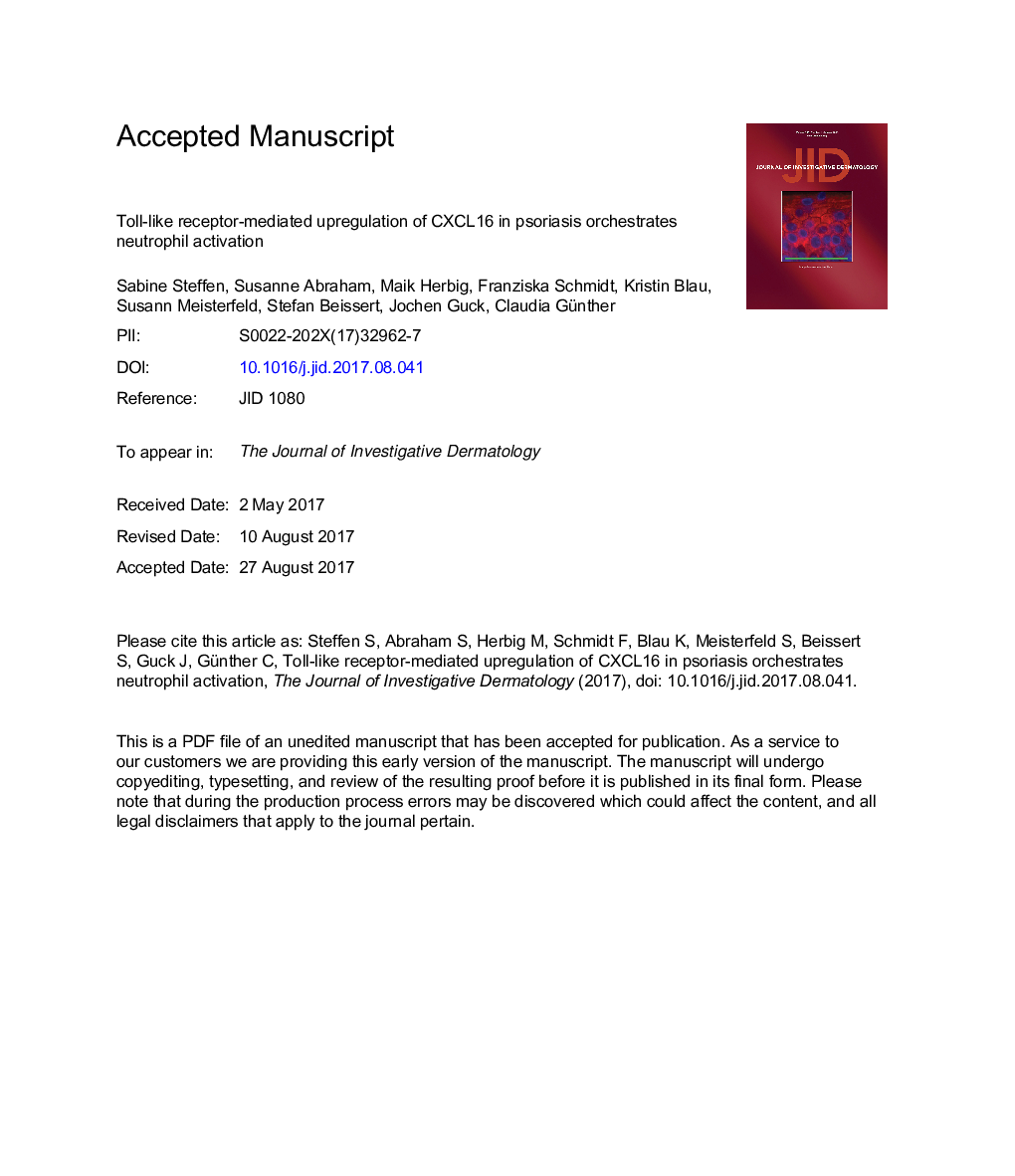| Article ID | Journal | Published Year | Pages | File Type |
|---|---|---|---|---|
| 8716170 | Journal of Investigative Dermatology | 2018 | 31 Pages |
Abstract
Innate immune processes are central in the development of the chronic inflammatory skin disease psoriasis. Studying stimulation of keratinocytes, monocytes, and dendritic cells by type I interferons or ligation of Toll-like receptors 1/2, 2/6, or 7, but not 7/8, resulted in enhanced surface expression and secretion of CXC chemokine ligand (CXCL) 16. The corresponding CXC chemokine receptor 6 was expressed on neutrophils whose recruitment into skin is important, especially in early psoriatic disease. Using the recently developed technique real-time deformability cytometry demonstrated that CXCL16 and IL-8 decreased the stiffness and enhanced deformation of neutrophils facilitating transmigration through vessel wall. In addition, CXCL16 potently induced migration of neutrophils and enhanced the chemotactic effect of IL-8. The positive feedback loop was supported by IL-8 enhancing CXCL16 production of neutrophils. Blocking of CXCL16 expression by effective treatment of psoriasis patients with tumor necrosis factorâα blockers further supported the pathogenic role of this chemokine. In summary, the data link innate immune stimulation to CXCL16 upregulation and neutrophil infiltration into skin. CXCL16 could therefore represent a potent future target for treatment of psoriasis.
Keywords
Related Topics
Health Sciences
Medicine and Dentistry
Dermatology
Authors
Sabine Steffen, Susanne Abraham, Maik Herbig, Franziska Schmidt, Kristin Blau, Susann Meisterfeld, Stefan Beissert, Jochen Guck, Claudia Günther,
